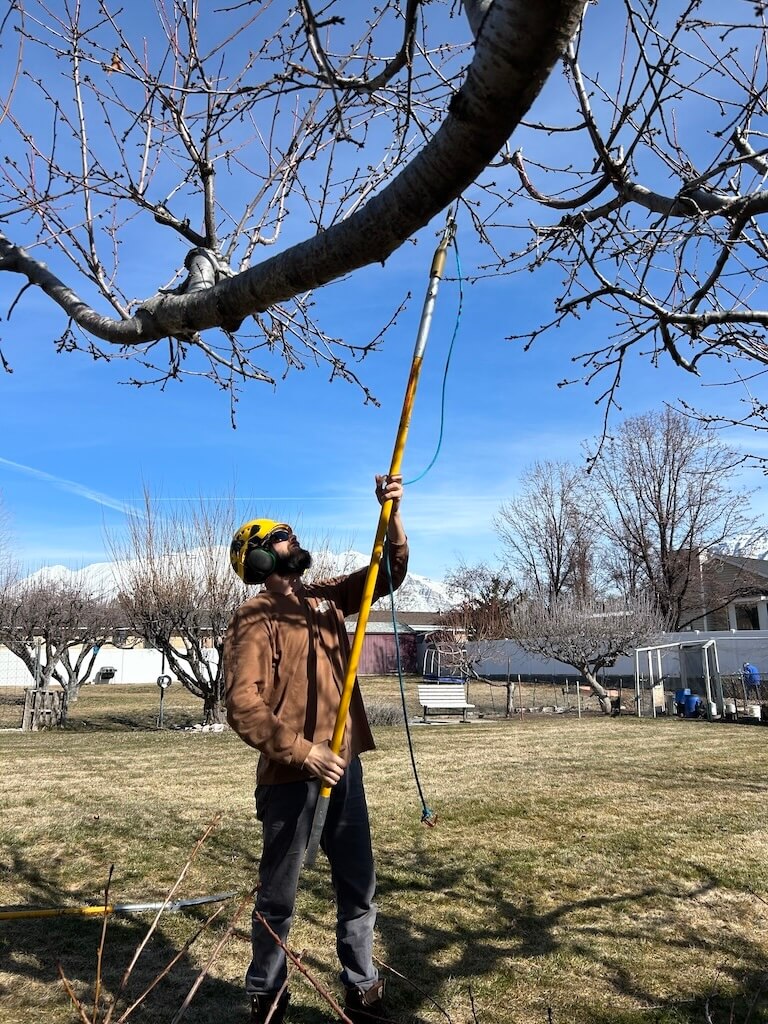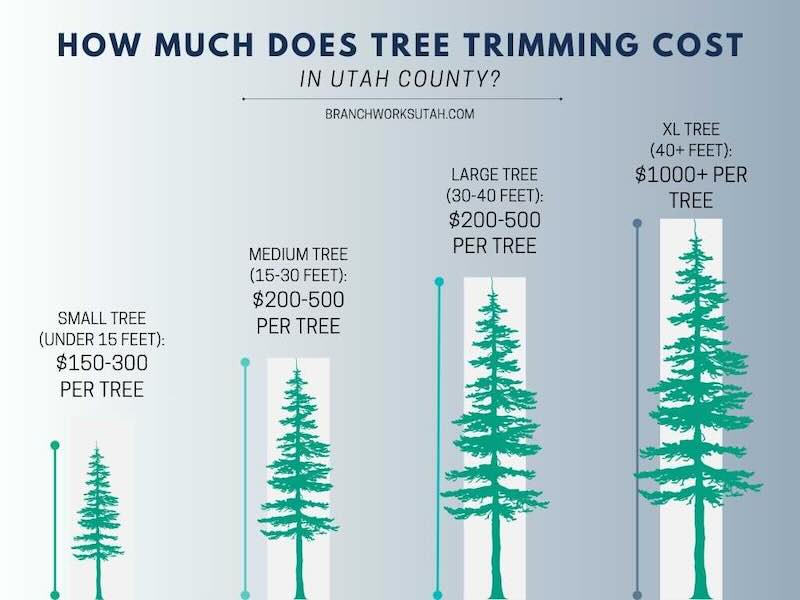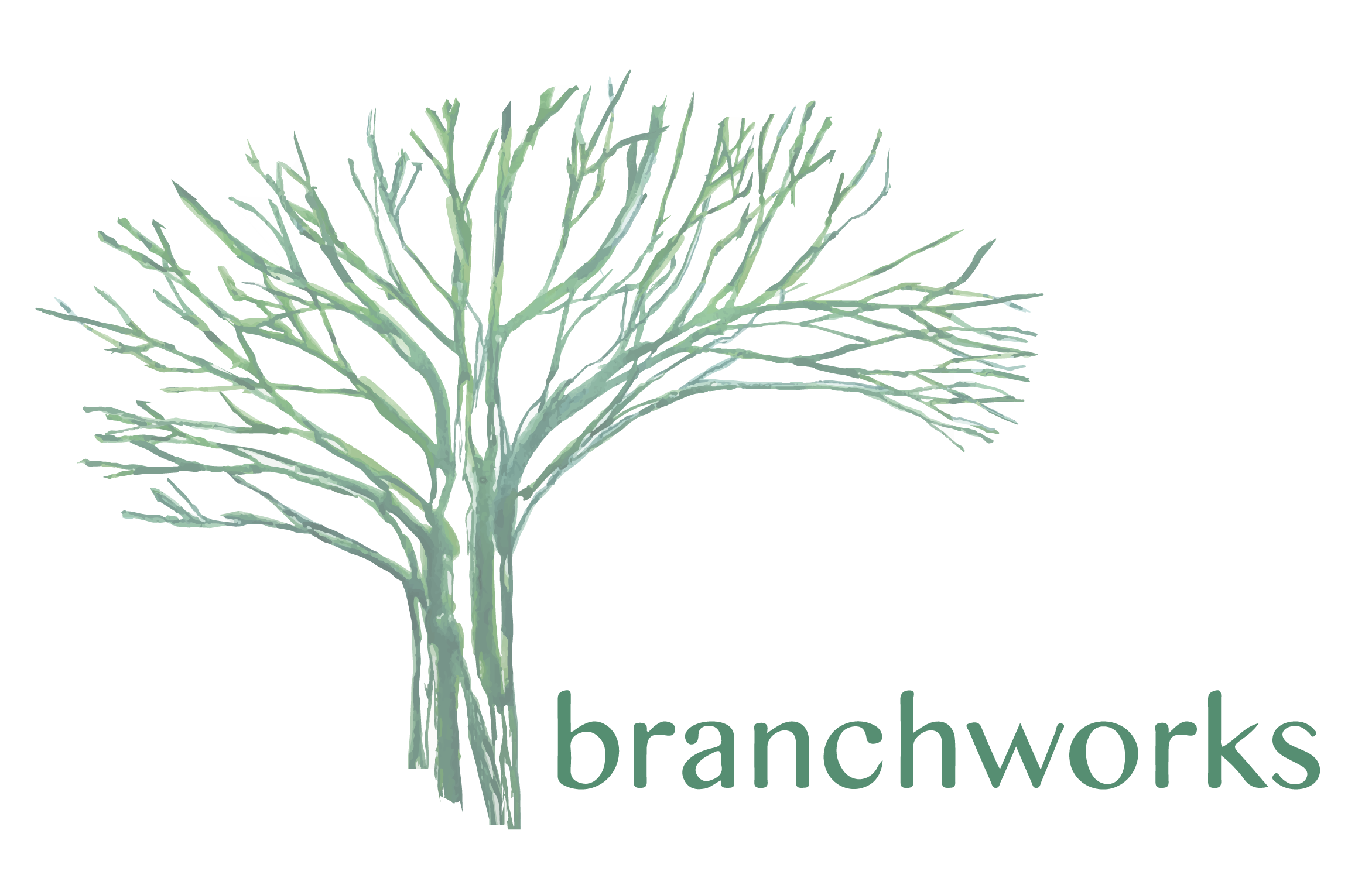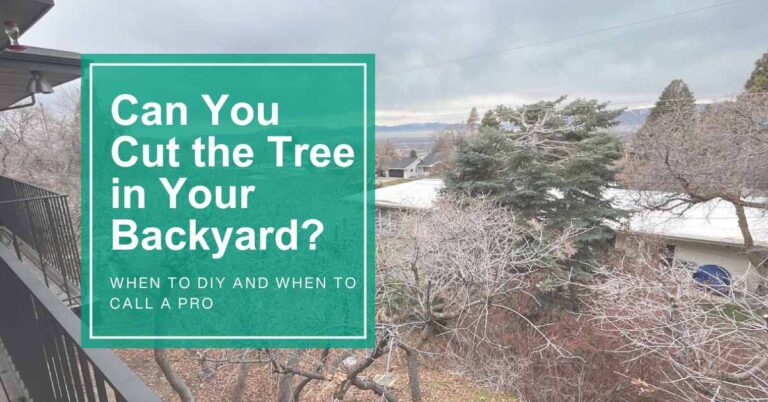Trees are a beautiful addition to any property, but they require regular maintenance and trimming to stay healthy and attractive – so how much does that cost?
While there are many cost factors that can have an effect, the average cost of tree trimming in Utah County in 2024 is $200-600 per tree. For a small tree under 15 feet tall the average price of trimming is around $150 per tree, and for larger trees or tall trees over 40 feet, the cost of trimming is closer to $600-800.
Other factors such as type of tree, tree health, nearby obstacles or structures can also influence the cost. This article will break down those factors that affect the cost of tree trimming and help you decide if it’s a DIY project or one best left to the professionals.

Why do I need to trim my tree?
There are several reasons why it’s a good idea to trim your trees regularly:
Improved health:
Trimming removes damaged, diseased, weak, or dead branches. This allows the tree to divert its resources to healthy branches, making the tree grow stronger.
Enhanced Safety:
Overgrown branches can become hazardous, especially during storms. Trimming can prevent branches from falling on your home, power lines, or people.
Increased Sunlight:
Strategic trimming reduces density, allowing optimal sunlight to reach your property, which benefits your lawn and garden.
Boosted Aesthetics:
Trimming can improve the overall appearance and property value of your tree and your property.
How Often Do I Need to Trim My Tree?
The frequency of trimming depends on the species of tree and its growth rate. However, a general rule is to trim every 3-5 years.
Young trees (less than 10 years old, approximately) need to be trimmed slightly more often than mature trees, every 2-3 years.
An exception is fruit trees — they need to be trimmed every year, sometimes twice a year. This maintains a small growth habit to allow for easier fruit harvesting, and also encourages production of healthy, good-sized fruit.
When is the best time of year to trim my tree?
Most landscape trees can be trimmed any time throughout the year. For certain fruit trees or flowering trees, trimming at the wrong time can affect their flower or fruit production.
The ideal time for tree trimming varies depending on the tree species and your location. In general, late winter or early spring, before flowers (if any) appear, is a good time for most trees. This is because the tree is still dormant and so trimming will not hinder its growth.
In the case of storm damage or disease, your tree may require emergency service. Damaged branches, diseased branches, or dead limbs should be taken care of right away to protect the tree.
That being said, a tree trimming company is generally the busiest during early spring through fall. So if your tree is not flowering or fruiting, you can often get the best price by scheduling your tree trimming job outside of peak season, during the later fall to winter months.
How much does it cost to trim a tree?
Factors that affect the cost of tree trimming
Size of the tree:
Tree size is the most obvious reason that will affect how much it costs to trim a tree. Larger trees generally cost more to trim than smaller trees. This is because they require more time, labor, and equipment.
- Small tree (under 15 feet): $150-300 per tree
- Medium-sized tree (15-30 feet): $200-500 per tree
- Large tree (30-40 feet): $500-1000 per tree
- Extra-large trees (over 40 feet): $1000-1500+ per tree

Tree type:
Some tree species are more difficult to trim than others. For example, trees with dense foliage or thorny branches may cost more. Trees that have not been pruned regularly and are overgrown will also drive up the cost.
- Deciduous trees: Some common types of trees in this category in Utah include maple trees, oak trees (gambel oak or shrub oak), willow, ash, box elder, and elm. These trees can be accessed with a lift or by climbing. You can expect to pay between $250-700 for trimming a deciduous tree, depending on size.
- Evergreen trees: Evergreen trees such as pine trees can grow extremely tall, and they generally have very dense branches, which makes them more complicated. They are not generally a tree that can be climbed. You can expect to pay between $300-800 for trimming an evergreen tree, depending on size.
- Fruit trees: fruit trees are generally shorter and less dense, if they’ve been maintained properly, which makes them less expensive to trim. You can expect to pay between $100-200 for trimming a fruit tree, depending on size.
Accessibility and nearby obstacles:
Trees that are difficult to access may cost more to trim. This includes trees located near power lines, buildings, fences, sheds, or other obstacles. This requires more complex rigging to ensure limbs don’t get dropped and damage the structures.
When the tree is located in a difficult to reach or remote area that can’t be reached with a lift, then it must be climbed, which adds to the cost.
Additionally, if the tree is tucked in a spot that can’t have a truck or trailer parked nearby, requiring the debris to be hauled further, that also adds to the cost.
Tree health:
The health of your trees affects the tree trimming costs. Diseased or damaged trees are usually more complex to trim than healthy trees. They may require more extensive tree pruning and more expert knowledge to know how to preserve the health of the tree.
Extra services:
The number of trees will affect the cost, of course. If you have multiple trees you can ask about a volume discount.If you need additional services, such as tree stump grinding or stump removal, this is usually a separate, additional cost. The cleanup is almost always included in the price of tree trimming – however some homeowners may wish to keep the branches or wood chips on their property instead of having them hauled away, which can reduce the overall cost.
Trimming versus removal:
Tree removal is a much more expensive proposition than trimming that requires another article entirely. If your tree is healthy, trimming is almost always the more cost-effective option.
Geographic location:
How much does it cost to trim a tree based on geographic location? This can vary; more remote or rural areas generally cost more to account for travel time.
BranchWorks offers tree services in Utah County, in the following cities:
- Orem
- Provo
- Lindon
- Pleasant Grove
- Springville
- Mapleton
- American Fork
- Highland
- Alpine
- Lehi
- Saratoga Springs
DIY Tree Trimming vs. Hiring Professional Tree Trimming Services
For small, healthy trees with easy access, DIY tree trimming may be an option. If your job is a smaller tree and you can reach the lower branches without a ladder and without climbing, and it is not near a structure that is in danger of getting limbs dropped on it, then it is more feasible to do it yourself.
Read more here: Can I Cut The Tree In My Backyard? When To DIY & When To Call A Pro
Can I DIY my tree trimming?
If you answer “yes” to the following questions, you may be able to do your tree trimming yourself:
- Smaller tree (less than 15 feet)
- Can reach the lowest branches without a ladder and without climbing the tree
- Not near a home or structure that could be damaged if limbs were dropped on it
- Small branches that are narrow enough to trim with a hand saw or pole saw
- You own the proper special equipment needed (e.g., pruners or pole pruners, handsaw, ladder, chainsaw, hard hat or helmet, etc.)
However, for larger trees, difficult jobs, or if you have any doubts about your ability to do the job safely, it’s always best to hire a certified arborist. They have the expertise, safety equipment, and insurance to handle the job safely and effectively. They know where, and how, to make the proper cuts to keep the tree healthy and growing properly, and how to lower large branches and limbs without damaging property, structures, or your lawn or landscaping.
The biggest safety hazard with tree trimming is limbs dropping in unintended directions, damaging property or causing injury. If you DIY your tree trimming and damage your home or other structures, your homeowners insurance generally does not cover this.
If you don’t have experience or the necessary tools and equipment, it’s a good idea call a tree professional. That way, you can trust that your tree and your property are in safe hands. You can reach out to BranchWorks and ask how much does it cost to trim your tree with an easy, free quote here.
Conclusion
By considering the factors listed above, you can get a better idea of how much tree service will cost for your specific situation. Remember, a healthy tree is a valuable asset to your property, so regular trimming is an investment that will pay off in the long run.
Give us a call today and we will give you a free, no-pressure estimate, and the best advice on how to take care of your tree.

